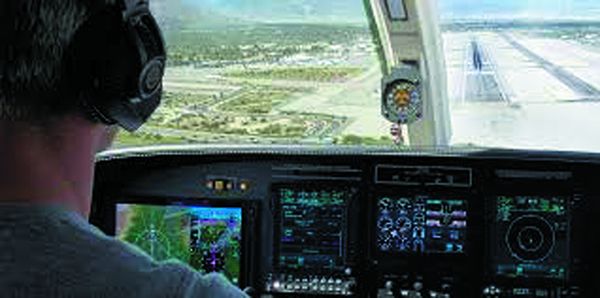Doing the research for this article, we spoke with aircraft owners and insurance brokers. We came away concerned for the financial well-being of owners because we heard owners repeat some aviation insurance myths that should have died long ago and because some have signed agreements that—in certain circumstances—can negate the insurance they spent good money to buy.
• Myth 1: If I buy insurance I’m turning myself into a target. “Those plaintiff attorneys are always looking for someone to sue. If I’ve got insurance, they’ll come after me instead of going after the real cause.”
The “logic” apparently evolved from the experience of aircraft and engine manufacturers who are often named in lawsuits because they usually have good insurance and the plaintiffs hope that the manufacturer will cough up some money.
The hard reality is that at least 80 percent of aircraft accidents are caused by something the pilot did wrong.
Someone who owns an aircraft probably has assets worth pursuing. Rather than turn the owner into a target, insurance is designed to protect those assets.
Besides, there has to be an accident before there is a lawsuit. The aircraft owner can’t be a target until he’s crunched his airplane. Then, the insurance performs its design function to let the owner sleep at night knowing her family assets are safe.
• Myth 2: I can point the finger at a manufacturer because it did something that made me have an accident.
This popped up in conjunction with a discussion of Garmin’s new three-dimensional visual approach guidance (pictured). The owner told us, correctly, that Garmin’s guidance uses a three-degree glideslope universally. However, the visual descent for his home airport requires a four-degree descent to clear obstructions. He said that if he hits the ground, it’s Garmin’s fault.
That may sound good if you say it fast, but manufacturers aren’t stupid. In the visual approach example, Garmin spent a lot of time making it clear to users in its manual that the descent guidance is just that, guidance. The pilot is responsible for obstruction clearance.
We’ve spent time a lot of time watching aircraft manufacturers check, double-check and cross-check data, performance, handling and operating instructions. Following an accident, the odds are that the makers got things right and the pilot slipped up.
• Pitfall 1: Not buying enough insurance coverage. The most popular aircraft liability policies include “sublimits” that limit the coverage for each passenger to $100,000.
The owner may think that he’s bought a $1 million policy—only to find that there is really only $100,000 available to settle the injuries to the single passenger.
In our opinion, if the owner has any assets, buying a policy with “sublimits” rather than “smooth” limits (the full amount of the policy is available even if just one passenger is injured) is a mistake. If you have a sublimit policy and are sued for a badly injured passenger, your insurance company will probably put up the full $100,000 right away and walk away from the case. Once the insurer puts up its limits, it no longer has to provide you with an attorney. You’re on your own.
• Pitfall 2: Signing an agreement that negates your insurance coverage. All of the aircraft liability policies we’ve read exclude coverage if the aircraft owner assumes any liability under a contract or agreement or if the owner has assumed (accepted) liability. It also prohibits the owner from doing anything to interfere with the insurance company’s right to subrogate (pursue for reimbursement of the money it paid you) against the real wrongdoer in an accident.
We have seen some FBOs require that an aircraft owner sign an agreement not to sue the FBO for its services before the FBO provides those services, most commonly fueling and de-icing. If the owner signs and then has an accident caused by the FBO’s services, the owner’s insurance company can refuse to pay the owner for damage to the airplane because the owner interfered with the insurer’s right to subrogate against the FBO.
Whether the agreement signed with the FBO is valid or not depends on state law, but do you want to have to litigate that issue to get your insurance to pay? FBOs carry insurance—so we think it’s unethical for an FBO to require that an owner sign away rights in return for routine service.
Pitfall 3: Signing an agreement that obligates the owner to pay to defend a manufacturer or service provider against a lawsuit.
Thus far we’ve only run across this with an extended warranty offered by Avidyne on its avionics. The aircraft owner agrees not only to not sue Avidyne if she crashes, but also agrees to defend Avidyne if someone else—for example, a passenger—sues Avidyne. Her insurance will not help her, she’s got to pay to defend Avidyne.
Got a spare million bucks lying around? We think that self-insuring for the wrong reasons is a mistake, just as we think underinsuring and signing away rights is something owners shouldn’t do.





